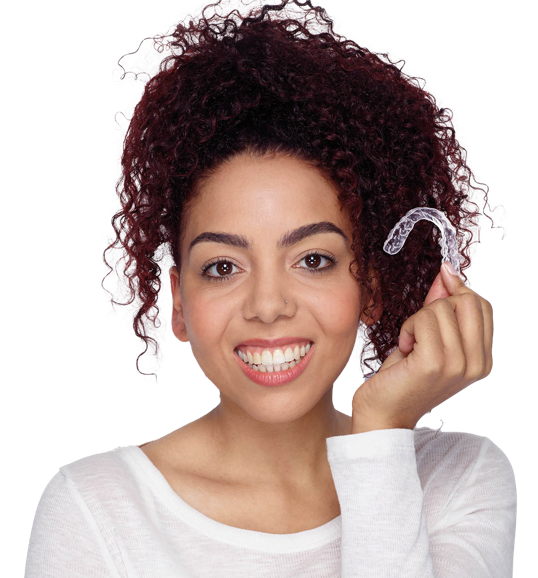Straightening open bites

What is an open bite?
An open bite is a common misalignment where your teeth don’t bite together properly. Ideally, when you bite down with your back teeth, your upper front teeth will slightly overlap your lower front teeth. If there is a gap between the front teeth, this is known as an anterior open bite. A posterior open bite occurs when the back teeth don’t bite together properly.
Some open bites can be very small and don’t cause any problems. More severe open bites can make biting into foods and chewing difficult, and even cause speech problems. There’s also a risk that the teeth that bite together will wear down prematurely from increased contact.
What causes an open bite?
Open bites can have many causes – some of which are preventable if you catch the habit early enough.
Baby teeth
It’s very common for young children to have an open bite while they have a mixture of adult and baby teeth. This usually resolves itself when all the adult teeth come through.
Skeletal development
Some open bites can be genetic and caused by a problem with the jawbone. For example, the molars can be in the wrong position, or the jaws can grow away from each other, creating a hyperdivergent open bite.
Thumb sucking
Thumb sucking is a common habit that most of us grow out of by toddlerhood. If it persists later in life, particularly once your adult teeth have come through, it can result in a thumb or finger shaped open bite. Sucking on inanimate objects such as pencils, or even your lower lip, can have a similar effect.
Tongue thrusting
Tongue thrusting involves pushing the tongue through the front teeth when swallowing, talking – or even at rest. In time, this habit can create an open bite, overbite or underbite, depending on where the tongue is pushing against the teeth.
How can we treat open bites?
Open bites can be improved using fixed braces or Invisalign.
Fixed braces include clear fixed braces and hidden lingual braces. To help reduce your open bite, you may need to wear orthodontic elastics. These small, elastic bands attach to your brace to gradually pull your upper and lower teeth together.
Invisalign is an increasingly popular way to treat mild to moderate anterior open bites. Instead of using orthodontic elastics to close the gap, it works by adjusting your molars (back teeth) to close the space between your front teeth.
Severe open bites may require jaw surgery to achieve the best result. It’s also important to address the underlying cause of your bite where appropriate.
It’s also possible to reduce open bites using veneers and crowns. These work by lengthening the tooth to disguise the space. Teeth bonding – which is less destructive – can also help if the gap is very small.
Open bites and orthodontic relapse
Teeth have a tendency to move and ‘relapse’ after orthodontic treatment. To prevent this from happening, we provide our patients with fixed and/or removable retainers.
Certain malocclusions (bad bites) are less stable following orthodontic treatment and more at risk of orthodontic relapse – open bites included.
This means it’s especially important to wear your retainers diligently. Sometimes it’s also necessary to overcorrect an open bite to allow for a certain degree of relapse.
For more advice on treating open bites, contact us to arrange your free no-obligation consultation.



